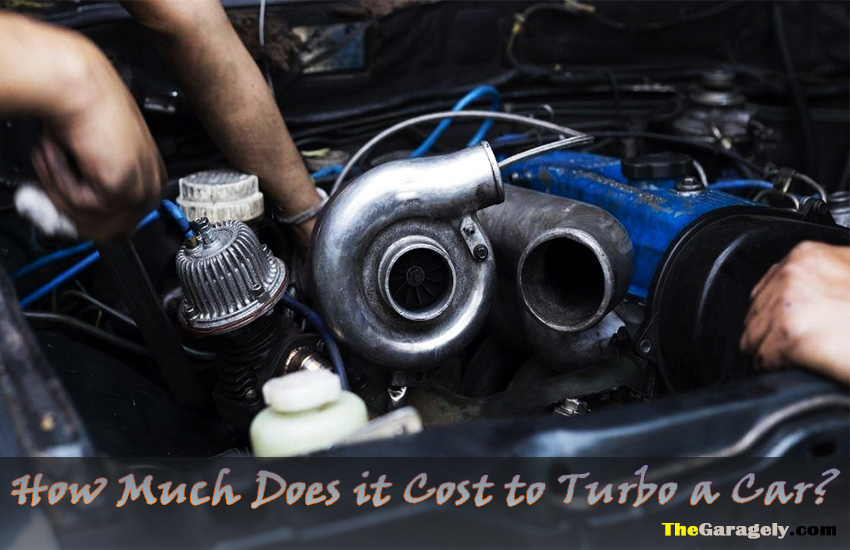
Those who are passionate about automobiles will never stop searching for the ultimate speed in order to reach eternal bliss. This can’t happen very often since our autos are restricted in power. As a result, automobile enthusiasts are looking for a means to boost speed while minimizing waste. Because of this, turbo is the ideal choice for these people.
With turbochargers, you may increase the power and efficiency of your engine. You’ve come to the correct site if you’re curious about forced induction and wondering how much does it cost to turbo a car. Turbocharger installation is a complex operation that varies greatly from model to model.
With the sky being the limit, adding a turbo might cost anywhere from $500 to $3000, depending on the make and type of your vehicle. To have a custom turbo setup, you’ll likely need at least $10,000. Everything you need to know about the installation procedure and pricing breakdown can be found here.
How Does A Turbo Work?
In principle, a turbo is a heated pump that pushes more air into the engine, hence increasing horsepower. Fuel consumption and pollutants may be reduced by increasing the number of air engines, which can create power more effectively. As exhaust gas departs the engine, the turbo powers the turbine, which spins the compressor, which pulls in and compresses air. The turbo is positioned in the exhaust system between the exhaust manifold and exhaust pipe. The turbo provides essential lubrication by allowing oil to flow through it. You may learn a lot about the price of a vehicle exhaust pipe here.
When it comes down to it, the turbo is a very sophisticated piece of engineering that is designed to extremely tight tolerances. A shaft supported by a bearing system connects the turbine and compressor. The turbo is powered by the exhaust gas’s unused energy. Exhaust gas exits through the turbine casing and into the atmosphere.
For the turbine wheel and turbo housing, high-temperature materials are required since exhaust gas temperatures may exceed 950 degrees Celsius. At idle, the turbine wheel rotates at a low speed because more gas is passing through the turbine housing. As engine speed increases, the turbine wheel spins faster. At maximum speed, the turbine wheel can spin the turbine at 360 thousand revolutions per minute—six thousand revs per second.
With the turbine rotating, the forged steel shaft connects the compressor wheel to it. The compressor wheel pulls air into the housing, where it is squeezed by the spinning blades. An air stream with high velocity and low pressure enters the housing and exits as a low-velocity, high-pressure stream.
Compressed air may be as hot as 200 degrees Celsius when it enters the machine. Air density falls as pressure rises, resulting in a loss of power. The high-pressure air is frequently cooled by passing it through a charged air cooler or intercooler that utilizes air or water. A bearing housing lubricated by engine oil houses the forged shaft that connects the turbine and compressor.
The thrust system and journal bearings are lubricated by a pressurized supply of oil. The oil also serves as a coolant, removing heat from the turbine as it is dispersed through it. Between the bearing and shaft and the bearing and housing, the journal bearings float on a thin layer of oil.
These oil films need adequate approvals. Oil seals are located on both ends of the airing housing. Normal engine oil seals cannot deal with the high temperatures and pressure of turbos. Thus these seals were developed specifically to prevent oil leakage from the compressor or turbine housings.
How Much Does It Cost to Turbo A Car: In-Depth Look!
Low-end turbochargers often cost between $400 and $2,000 to replace. You may, however, save money by purchasing a second-hand turbo for your vehicle. The cost of a turbo varies depending on the model, as well as the vehicle’s base.
If the customer has a specific suggestion, the cost of turbo rises from $100,000 to $400,000. The hourly rate for labor is $90-$120.
Turbocharger Vs Supercharger: The Main Differences!
There are significant and subtle differences between turbochargers and superchargers. The main distinction is in how they power the engine.
Turbochargers
The engine is not linked to the turbochargers. They generate power by drawing on the exhaust stream and spinning a turbine to turn a compressor. However, turbochargers are fitted with smog-altering components that help to reduce the amount of pollution they produce.
Turbocharged engines have a favorable influence on fuel economy and carbon emissions, according to new research in the International Journal of Emerging Trends in Engineering and Development.
The typical turbocharger revolutions per minute (RPM) is 15,000. Most automobiles’ low-speed torque can be increased by 44% using Variable Geometry Turbochargers (VGT), according to research.
Superchargers
A belt connects the supercharger to the engine. The crankshaft of the engine is used as a power source by these devices. A boost in power is provided by superchargers, which push compressed air into the engine. Because of the absence of a wastegate, superchargers produce more pollution than turbochargers while being more powerful. The typical rotational speed of a supercharger is 50,000 revolutions per minute.
Final Words
An automobile turbocharger is a pricey purchase. So, how much does it cost to turbo a car? You should anticipate paying between $500 and $3000 for components and labor, depending on the make and model of your vehicle.
For turbochargers, there is no limit to the money you may spend. A technician can give you an estimate on the cost of a turbocharger if you’re on the fence about obtaining one. The components may be purchased online for a fraction of the price after you have an estimate.
Remember that if you know what to look for and can source the components yourself, you can often save a third of your budget. That’s all for today. Thanks a lot for reading. Have a nice day!
Leave a Reply